Instruction
Swing path problems and how to fix them
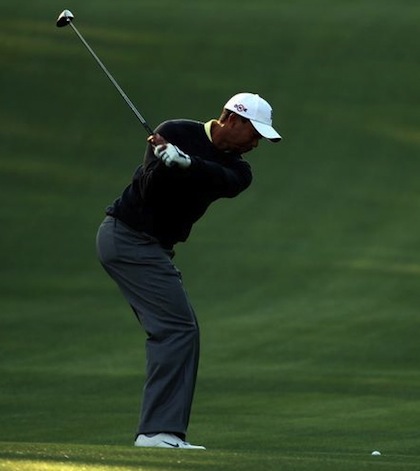
In my previous story, I discussed Tiger Woods’ ongoing struggle with his swing path, which at times is too inside-out.
Because Tiger pushes the needle more than just about any other athlete in the world, many readers took the article as a personal affront to Tiger, and I fear that the message in the article may have been lost. So I want to take the opportunity to discuss the swing path in more detail for readers who may not have understood exactly what I meant.
There are three general directions that a golf club travels through impact:
- Along the base plane line (BPL).
- To the right* of the BPL, which is called in-to-out.
- To the left* of the BPL, which is called out-to-in.
*Note: For left-handed golfers, the directions are reversed.
Only one of these paths, No. 1, is an arc that moves in-to-in. The others are much straighter lines. The term “in-to-in” simply means the golf club is approaching the ball from inside the BPL and arcing back inside the BPL after impact. Is there an ideal swing path, golfers often ask me? That depends on the face angle of the golf club in relation to the path. But the shape of the in-to-in path is preferable because golfers play the game from “inside” the golf ball, or “aside” it if you will.
All golfers fall into swing patterns. I have yet to teach any player who swings the club easily both ways. Once golfers develop a swing, it is what it is until a concerted effort is made to change it. The problem with the in-to-out and out-to-in paths is they are both reliant on a matching face angle (one that is closed or open to that path). Can a golfer play with a swing path that is 6 degrees in-to-out? Sure, if the face is consistently 2 degrees closed to that path. But if the path is more consistently in-to-in, the face can be square to that arc.
Note: I have used the term BPL as opposed to the term “target line” simply because the ONLY time they are one and the same is when golfers set up perfectly parallel left of the target line. Many touring pros play from a slightly open position, meaning that their BPL is somewhat left by design. They do this to offset the “rightness” of their path, especially when hitting down on an iron. Remember that any golf club swung on an inclined plane is swinging right of the BPL when it is swinging DOWN. When a golf club is swinging left of the BPL, it is swinging UP.
Paths that are well right or left cause average golfers nightmares because they cannot match their clubface to the path consistently. So what can golfers do to get on a better path? Well, there are several contributing factors, but one of the things I see is that golfers are under the illusion that the body controls the club.
“Turn the shoulders away in the backswing and the hips through in the downswing” is what I hear from many golf professionals. And this is the desired body motion for most swings. But (and here is the point I was making in the Tiger article) the golf club is swung by the ARMS, which happen to be attached to the shoulders (NOT THE HIPS or any other part of the anatomy).
Yes, the body must get out of the way for the arms to swing, but the ARMS do the swinging. So if a player is suffering from an inside-out path, simply turning the lower body through impact is not sufficient. In fact, what I teach many of my players who are stuck under or have a swing path that is too far inside is to consider turning the UPPER body through. If you watch Tiger’s practice swing, the big difference is that his shoulders open early in the downswing, which allows the club to swing more left. Is this a universal prescription? Of course not. If your path tends to be too much to the left, it may suggest your shoulders are opening TOO early; again different strokes for different folks. The point is that many of my tournament players who get overly focused on rotating through the ball get even more under or inside their desired path.
I am not advocating playing golf with your arms; we all know the value of the body in the swing. I am merely suggesting that the role of the body, in addition to supplying balance, reacting to ground forces, adding power, etc., is to make room for the arms to swing and therefore move the golf club through the golf ball.
My favorite drill is this: If you have been on Flightscope or Trackman and learned that your path is in-to-out or out-to-in and you desire to change it, MOVE THE GOLF BALL DRASTICALLY IN YOUR STANCE. So, if you are seriously in-to-out and struggling with club face or bottom of the swing issues, move the golf ball WAY forward in your stance (like past your left toe). Do this for a week, and you will start to feel your reaction.
Here’s why: When the golf ball is back in your stance, your instincts are to drop your arms and get the golf club down first. When the golf ball is well forward, your instincts are to open your body first and drop the club later. I have used ball position changes to redirect swing paths for years and if you do it long enough, you WILL change. Later you can gradually bring the golf ball back to a more standard position.
Remember this: Do not worry about the results of your shots when doing these drills. You are trying to change a motion, drills can help that. One of my favorite drills for under plane, shallow attack angle players is to hit drivers off the ground from a forward ball position.
One more thing: In my previous story about Tiger, I mentioned getting the club back out in front of you. This involves not only turning the body, but also rotating the arms. If you “drag the handle” or try to “lag” the club, it often stays behind you. Think about that for a bit and you’ll see what I mean.
As always, feel free to send a swing video to my Facebook page and I will do my best to give you my feedback.
- LIKE137
- LEGIT24
- WOW9
- LOL4
- IDHT5
- FLOP11
- OB10
- SHANK29
Instruction
Clement: Stop ripping off your swing with this drill!

Not the dreaded headcover under the armpit drill! As if your body is defective and can’t function by itself! Have you seen how incredible the human machine is with all the incredible feats of agility all kinds of athletes are accomplishing? You think your body is so defective (the good Lord is laughing his head off at you) that it needs a headcover tucked under the armpit so you can swing like T-Rex?
- LIKE0
- LEGIT1
- WOW2
- LOL0
- IDHT0
- FLOP0
- OB0
- SHANK2
Instruction
How a towel can fix your golf swing

This is a classic drill that has been used for decades. However, the world of marketed training aids has grown so much during that time that this simple practice has been virtually forgotten. Because why teach people how to play golf using everyday items when you can create and sell a product that reinforces the same thing? Nevertheless, I am here to give you helpful advice without running to the nearest Edwin Watts or adding something to your Amazon cart.
For the “scoring clubs,” having a solid connection between the arms and body during the swing, especially through impact, is paramount to creating long-lasting consistency. And keeping that connection throughout the swing helps rotate the shoulders more to generate more power to help you hit it farther. So, how does this drill work, and what will your game benefit from it? Well, let’s get into it.
Setup
You can use this for basic chip shots up to complete swings. I use this with every club in my bag, up to a 9 or 8-iron. It’s natural to create incrementally more separation between the arms and body as you progress up the set. So doing this with a high iron or a wood is not recommended.
While you set up to hit a ball, simply tuck the towel underneath both armpits. The length of the towel will determine how tight it will be across your chest but don’t make it so loose that it gets in the way of your vision. After both sides are tucked, make some focused swings, keeping both arms firmly connected to the body during the backswing and follow through. (Note: It’s normal to lose connection on your lead arm during your finishing pose.) When you’re ready, put a ball in the way of those swings and get to work.

Get a Better Shoulder Turn
Many of us struggle to have proper shoulder rotation in our golf swing, especially during long layoffs. Making a swing that is all arms and no shoulders is a surefire way to have less control with wedges and less distance with full swings. Notice how I can get in a similar-looking position in both 60° wedge photos. However, one is weak and uncontrollable, while the other is strong and connected. One allows me to use my larger muscles to create my swing, and one doesn’t. The follow-through is another critical point where having a good connection, as well as solid shoulder rotation, is a must. This drill is great for those who tend to have a “chicken wing” form in their lead arm, which happens when it becomes separated from the body through impact.
In full swings, getting your shoulders to rotate in your golf swing is a great way to reinforce proper weight distribution. If your swing is all arms, it’s much harder to get your weight to naturally shift to the inside part of your trail foot in the backswing. Sure, you could make the mistake of “sliding” to get weight on your back foot, but that doesn’t fix the issue. You must turn into your trial leg to generate power. Additionally, look at the difference in separation between my hands and my head in the 8-iron examples. The green picture has more separation and has my hands lower. This will help me lessen my angle of attack and make it easier to hit the inside part of the golf ball, rather than the over-the-top move that the other picture produces.


Stay Better Connected in the Backswing
When you don’t keep everything in your upper body working as one, getting to a good spot at the top of your swing is very hard to do. It would take impeccable timing along with great hand-eye coordination to hit quality shots with any sort of regularity if the arms are working separately from the body.
Notice in the red pictures of both my 60-degree wedge and 8-iron how high my hands are and the fact you can clearly see my shoulder through the gap in my arms. That has happened because the right arm, just above my elbow, has become totally disconnected from my body. That separation causes me to lift my hands as well as lose some of the extension in my left arm. This has been corrected in the green pictures by using this drill to reinforce that connection. It will also make you focus on keeping the lead arm close to your body as well. Because the moment either one loses that relationship, the towel falls.


Conclusion
I have been diligent this year in finding a few drills that target some of the issues that plague my golf game; either by simply forgetting fundamental things or by coming to terms with the faults that have bitten me my whole career. I have found that having a few drills to fall back on to reinforce certain feelings helps me find my game a little easier, and the “towel drill” is most definitely one of them.
- LIKE11
- LEGIT1
- WOW2
- LOL0
- IDHT0
- FLOP2
- OB0
- SHANK8
Instruction
Clement: Why your practice swing never sucks
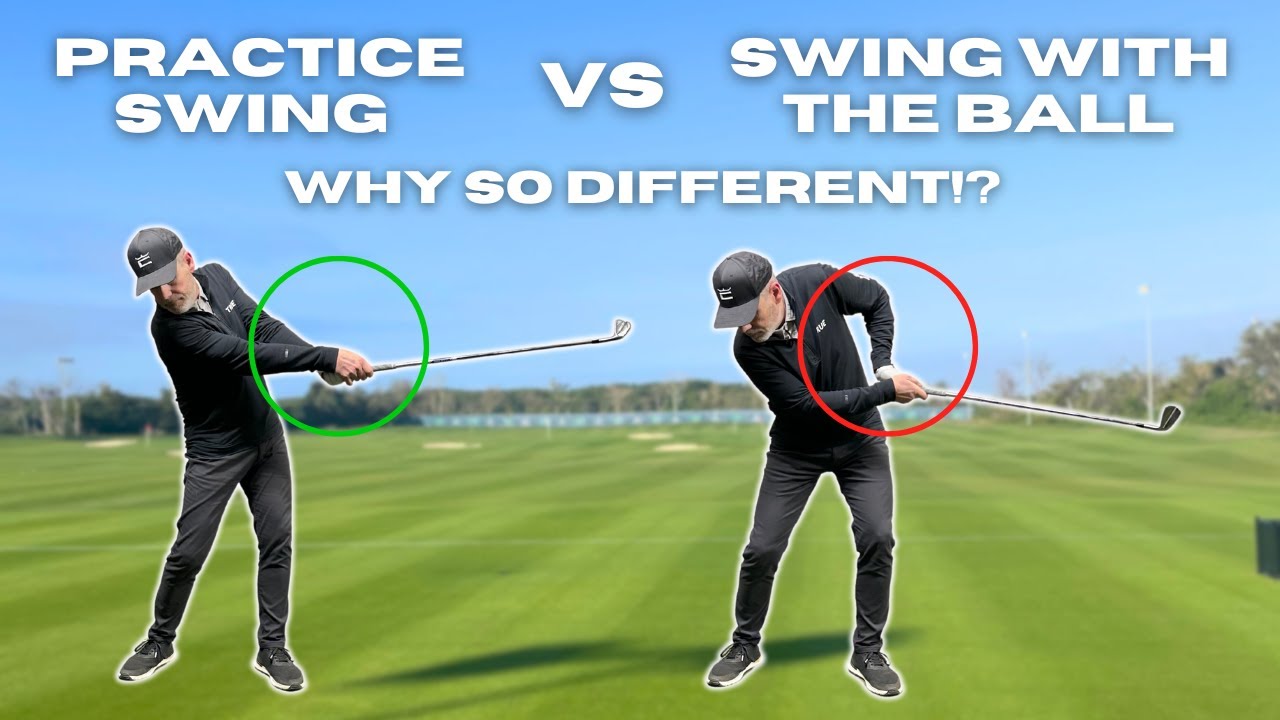
You hear that one all the time; I wish I could put my practice swing on the ball! We explain the huge importance of what to focus on to allow the ball to be perfectly in the way of your practice swing. Enjoy!
- LIKE0
- LEGIT0
- WOW0
- LOL0
- IDHT0
- FLOP0
- OB0
- SHANK2
-

 19th Hole1 day ago
19th Hole1 day agoJohn Daly stuns fans into silence with brutal opening tee shot on PGA Tour Champions
-

 19th Hole3 weeks ago
19th Hole3 weeks agoPaulina Gretzky opens up on receiving death threats following DJ’s move to LIV Golf
-

 19th Hole5 days ago
19th Hole5 days ago2-time major champ announces shock retirement from the sport at age of 33
-

 19th Hole6 days ago
19th Hole6 days agoEdoardo Molinari reveals the latest PGA Tour golfer to turn down ‘good offer’ from LIV Golf
-

 19th Hole1 week ago
19th Hole1 week agoScottie Scheffler had an interesting response when asked how he ‘quiets the noise’ following Players victory
-

 19th Hole1 week ago
19th Hole1 week agoJon Rahm dealt fresh blow to hopes of qualifying for 2025 Ryder Cup
-

 Equipment2 weeks ago
Equipment2 weeks agoBest driver 2024: The best driver for you, as recommend by expert club fitters
-
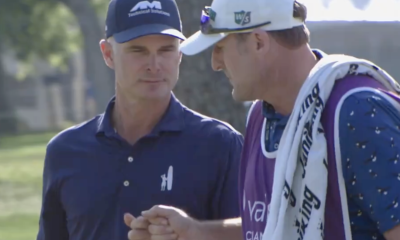
 19th Hole4 days ago
19th Hole4 days agoWhy Kevin Streelman sought USGA approval to use this equipment tool as he leads Valspar after round one













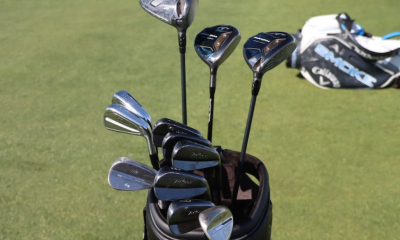

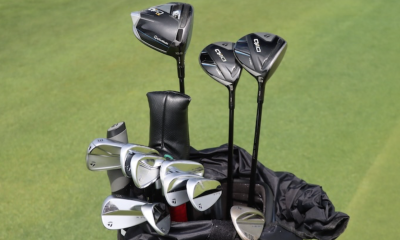



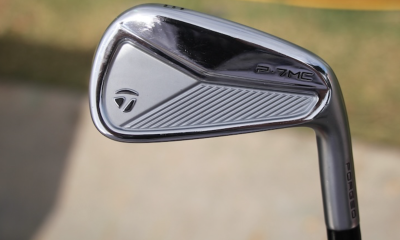

Ron J.
Jun 5, 2014 at 3:10 pm
Thanks for the great tip on encouraging an in-to-in swing path (moving the ball well forward). When I am trying to ingrain swinging down and through on my irons I have trouble maintaining the in-to-in path: I tend to swing out-to-in and sometimes I will shank. Do you have any suggestions or drills for maintaining the in-to-in path in this situation?
ENyst
Jun 3, 2014 at 8:14 am
Hi Dennis,
I’ve struggled for years with an in to out path, leaving the door open for the dreaded snap hook or push fade miss. A few lessons stressed swinging “left” which I really struggled with mentally. The ball position far forward seems to make great sense, are there any other tips for helping build a more natural in-to-in path? Thanks!!!!
Manu Martinez III
Jan 31, 2014 at 5:40 pm
Dennis, why did you say that the only time the target line and BPL are one in the same is when one is aimed perfectly parallel left of the target line? Where I align my body doesnt dictate where my actual swing plane will point at impact. I can set up perfectly parallel left of the target and have a swing plane the points left or right once impact occurs. Please advise. Great article just confused on that one detail.
Dennis Clark
Feb 11, 2014 at 9:06 pm
Just noticed this….yes I see your point. If I’m aimed parallel left but my HSP is left at impact, I have “shifted” my BPL to the left. My comment was more set up oriented.
Bailey Cottle
Jan 24, 2014 at 10:32 pm
Hi Dennis,
only just saw this article and i have been having a bad hooking problem even when weakening my grip which must mean a serious case of in to out swing path, just a question,should it feel like i pull my left shoulder into a slightly open position as i make my downswing? as this is what i feel costs me a lot of shots i still manage to shoot rounds in the 70s but i feel as though i should be mid-high 60s e.g 66-69.
thank you,
Bailey
Dennis Clark
Feb 11, 2014 at 9:11 pm
I might have you opening your upper body more from the top and a forward ball position.
Sam Soonthorn
Jan 9, 2014 at 8:31 am
Hi Dennis,
I played golf for about 35yrs+. Just got a chance to hit on Trackman for the first time with my driver. The results are..attack angle 2.6 degrees, Club path 7.5 degrees, Face angle 1.3 degrees and Face to path -6.2. My situation pretty much draw to hook.
Would you agree if I set myself to an open stance and aim a little left with ball forward, Will I overcome my hook shot?
Last but not least, Do you have any swing thought drill that I can use while I play to prevent me from hooking the ball?
Sam
Dennis Clark
Feb 11, 2014 at 9:15 pm
For a drill I might hit some drivers off the ground from a very forward ball position. As far as the path is concerned it appears the club is getting too far behind you either going back or coming down.
JAMES CONROY (JD)
Dec 15, 2013 at 9:22 am
Dennis, although I just finished reading your article, on swing path problems it was a “Eureka” event for me. Although, I have been a student of the game for over 60 years, I have never before encountered your innovative lesson on the profound effect that ball position has on swing path. I am a “blocker” (in-to-out) and only recently stumbled on the effect of ball position by trial and error. Reading your excellent article has reinforced and confirmed my suspicion. Thank you for your incite.
Dennis Clark
Dec 26, 2013 at 9:04 am
Thx Im glad it helped. Sorry for the delayed response.
Dennis Clark
Nov 20, 2013 at 8:04 pm
Thx everyone. Ball position is the oldest, easiest and still the best fix for swing path. Back for out to in and forward for in to out works WONDERS. I know because I see it every day. Another simple one is hills-moguls. Out to in can benefit from an uphill lie and in to out can be helped on a downhill slope. These hills work great for attack angle too. Good luck. Send me video anytime.
Eric
Jun 2, 2014 at 3:51 pm
MOV_1314.MOV
Jeremy
Nov 11, 2013 at 2:20 pm
Dennis…Great Article! I am a lefty and am having issues right now with inconsistent strikes. I feel like my hands are really flat halfway through my backswing and come way inside out. Would the forward drill correct that you think?
Ray Welsh
Nov 7, 2013 at 9:48 pm
Great article.
What drill would you recommend for a too steep/out to in path?
Ray Welsh
Nov 7, 2013 at 9:47 pm
Wonderful article.
Your drill for solving a very in to out, shallow path is great. What drill would you recommend for the opposite case ( out to in/ steep swinger?
Golfer X
Oct 29, 2013 at 7:59 pm
Like naflack, I am a sweeper, no divots whatsoever. I, also have short arms, but big biceps so I am strong enough to get a ball out there. My swing path is in to in, like a true arc, so for me ball position is of the utmost importance. My question is how do I position myself so that I pick the optimum ball position for my swing path during a round? Its easy at the range but during a round, is another story.
Dennis Clark
Oct 29, 2013 at 9:30 pm
“working” the ball requires a ball position change: back for a draw, forward for a fade. You’ll know if the ball is positioned correctly if your shots are not curving.
Dave M
Oct 14, 2013 at 11:23 pm
Hi Dennis, when performing the “ball forward” swing path drill do you recommend using a particular club or work through the bag? Try to finish posted up in balance or step through like Gary Player?
Pete
Oct 12, 2013 at 12:27 am
Dennis, I definitely get stuck on my downswing. On video, when I start my downswing, my hips turn so fast that my rms get stuck behind me. Maybe you are saying the same thing but I thought I should drop my arms down first trying to keep my shoulders closed longer and not rotate the hips too early with my arms lagging behind. Would it also be good for me to play the ball forward in my trance?
Dennis Clark
Oct 12, 2013 at 8:17 pm
Its different for everybody, of course. If I have taught you, or you’ve heard me say “get your arms down early and keep your shoulders closed longer, it is because someone is over the top. Not stuck or under. Quite the opposite really
Stan
Oct 11, 2013 at 2:57 pm
Dennis, I have problems hitting a lot of pulls and some pull hooks, and when I do hit it well, it’s often a slight pull and very high ball flight.
I take it from your piece that a good drill for me would be practicing with the ball well back in my stance?
Dennis Clark
Oct 11, 2013 at 4:29 pm
Yes from your ball flight description. Also check your lie angle(s) (too upright) and shaft flex (too soft). good luck
BA
Oct 15, 2013 at 2:43 pm
Dennis,
Like Stan, I get a case of the pulls. Through experimentation and lots of balls, I am pretty sure I open both the lower body and the shoulders far to quickly from the top. Of course, I can feel and see myself coming from out to in and hitting the outside of the ball. My cure, which has worked wonderfully has been to do no conscious turning of the hips or shoulders and simply swing the club back on the path I used on the backswing to hit the inside of the ball. It feels as if I am using no hips and hitting the ball with my back towards the target. Obviously this is not the case, but I have significantly slowed down my hips and shoulders. The momentum of the swinging club and arms pulls the body around to the finish. In my sense, the body has become totally responsive. Does this make sense?
[email protected]
Oct 9, 2013 at 11:20 am
Great Article. Actually used a ball position outside my left foot with the driver for a very long time to cure a nasty in-to-out hooking problem.
Dennis Clark
Oct 10, 2013 at 7:21 pm
It’s a great drill particularly for the better player.
Marcus
Oct 9, 2013 at 7:09 am
Hi Mr. Clark,
Thank you for a great article, I have a question since i’m a heavy in-to-out swinger.
1.: I have been struggling with early release, as to compensate I have a slightly too forward motion in my upper body, similar to the one Hunter Mahan haves, which previously could result in shanking quite a bit. How do I use your drill and place the ball more forward in the stance and still ensure my upper body and head is not moving too much down the line during the downswing ?
Thx
Marcus (hcp: 0)
Dennis Clark
Oct 10, 2013 at 7:19 pm
In to out and early is a not a compatible combination. You’re right that moving ahead of the ball is often a function of releasing too early, particularly from the inside. What might be best for you is to try and play from an open position. You will have to get away from playing the inside. It is very difficult to change a release point, much easier to change a path…
phil graeber
Oct 8, 2013 at 9:45 pm
My experience has been that the more focus you put on the club head actually hitting the ball means more success in the result. The next time you’re at the range, try remembering the divot after you’ve made the swing. The difficulty in seeing or remembering the divot instead of the shot it self is the key. When you can do this the tempo is right for you. Almost always and in every stroke-including putting.
My 2 cents/
tmk
Oct 8, 2013 at 11:04 am
Very interesting article. Thanks. I’ve always had an in to out path, but this year I’ve been working on a steeper shoulder plane both on the backswing and downswing. It has caused my path to be closer to in to in, though I do sometimes get a bit too far out coming in to the ball. Just curious, do you find that a steeper shoulder plane is generally helpful in getting someone to an in to in plane?
Dennis Clark
Oct 10, 2013 at 7:27 pm
well in to it is not a plane, it’s a direction, but in answer to your question: a steeper shoulder turn CAN help, but does not guarantee it. I see steep shoulders, and flat arms and club sometimes too. I am always leery of steep shoulders because I see it cause a poor weight distribution (reverse pivot.
invisaman
Oct 7, 2013 at 12:38 pm
This is article is just wanted I needed. You confirmed that the problems I have are all related.
A few months ago my swing had many pushes and push fades. I started turning my lower body more and the ball started more left but ended up right. Then I made my grip slightly stronger I got pull and pull hooks. I went back to the neutral grip and turned my lower body (hips) faster and most of the time I will get snap hooks or a push.
A fellow golfer told me I need to roll my hands more but the timing of the roll is difficult and my results were bad. So, recently I tried turning my upper body (shoulders) more in the downswing. Since the shoulders move the arms and the arms move the hands I starting to get better results. I am still working this part and I know it takes time.
Now the other part is loft. Based on the launch monitor readings I am swing down but still adding loft in my full swing!? Most of the time with irons I have shallow or no divot with irons. I think this is a weight shift or lateral movement issue. I thinking I am not leaning forward (left) enough at impact. I will try your “hit drivers off the ground from a forward ball position” drill.
I know this was bit long winded but read this article right after I came back from the range and it touched my “pain”.
Thanks!
Dennis Clark
Oct 7, 2013 at 5:00 pm
IM glad it helped. The adding loft sounds like an early release…
invisaman
Oct 18, 2013 at 12:06 pm
I have been working on the weight shift on the downswing doing just dry swings. The other day I went to range and I am compressing the ball. It seems to pop of the face with my irons. I hit some good shots but some bad one just the same. I have to get use to it. Thank you for writing this article!
Mike
Oct 6, 2013 at 5:07 pm
I have had a lot of success this year with a focus on my swing plane. I do every now and then hit my absolutely couple of terrible shots per round. These shots usually go of to the right with a slice spin and don’t ge to far. If I could eliminate those I would be in pretty go shape.
Dennis Clark
Oct 7, 2013 at 5:01 pm
Sounds like out-to-in with a severe open face.
naflack
Oct 6, 2013 at 1:37 pm
i have always been an in to out sweeper and any attempt to deviate not only negatively impacts my scorecard it also negatively impacts my body.
1) is it fair to say that our body type determines what swing type and path we use?
2) should i be gripping the club more neutral or strong with my swing type?
thanks
Dennis Clark
Oct 7, 2013 at 8:24 am
I can’t see how body type would play a role in path per se. And making a grip change suggestion without seeing your ball flight is difficult. But in-to-out needs a closed face so, depending on your hand action, just go by ball flight